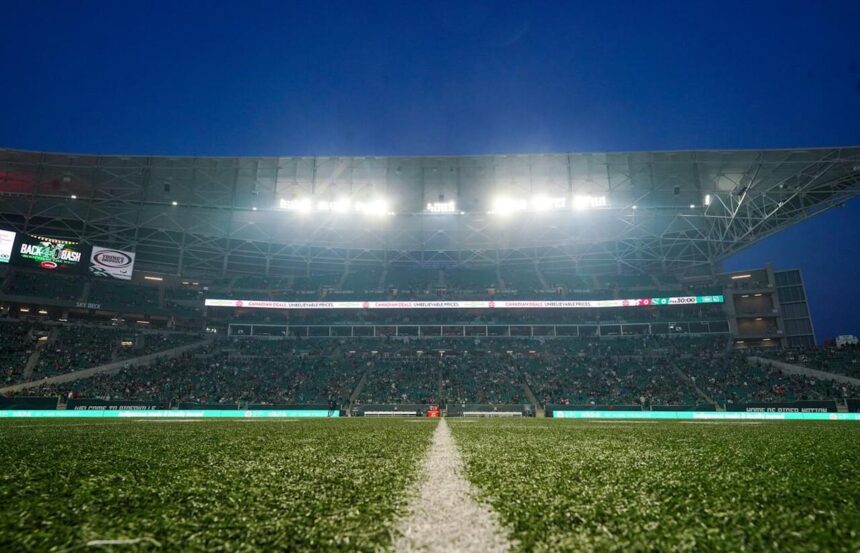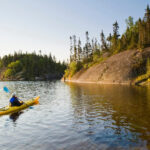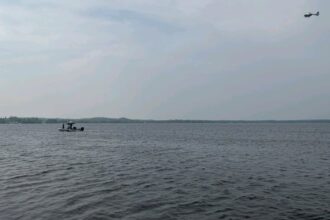The eerie orange haze that blanketed Regina’s Mosaic Stadium last weekend forced the Saskatchewan Roughriders to make an unprecedented decision in their 113-year history—postponing a home game due to air quality concerns. As devastating wildfires rage across northern Saskatchewan and Alberta, the resulting smoke has created a complex challenge for sports organizations throughout the province, raising questions about athlete safety and event management during environmental crises.
“Player and fan safety is always our primary concern,” explained Craig Reynolds, President and CEO of the Saskatchewan Roughriders. “When air quality readings reached hazardous levels, we simply couldn’t justify proceeding with the game.” The Canadian Football League (CFL) game against the Ottawa Redblacks, originally scheduled for Saturday evening, has been rescheduled for Monday night after air quality indices in Regina peaked at over 10 on a scale where anything above 7 represents high health risk.
While the Roughriders’ postponement made headlines, other sporting events across the province faced similar dilemmas with different outcomes. The Saskatchewan Soccer Association proceeded with its provincial championships in Saskatoon, though not without implementing stringent monitoring protocols. “We conducted hourly air quality assessments and had medical staff on standby,” noted Rahim Mohamed, Executive Director of Saskatchewan Soccer. “Fortunately, Saskatoon experienced temporary improvement in conditions that allowed us to complete most matches, albeit with modified schedules.”
The discrepancy in decisions highlights the complex factors sports organizations must weigh during environmental emergencies. Environmental health specialist Dr. Melissa Chen from the University of Saskatchewan explains that outdoor activity during poor air quality periods significantly increases respiratory risk. “Athletes are particularly vulnerable because they inhale more air—and consequently more particulate matter—during exertion,” Dr. Chen told CO24 News. “The threshold for safety varies based on activity intensity, duration, and individual health factors.”
Financial implications also loom large in these decisions. The Roughriders’ postponement created logistical challenges affecting thousands of fans, many of whom had traveled significant distances to attend. Local businesses near Mosaic Stadium reported substantial revenue losses from the schedule change. “Saturday games typically bring our busiest revenue day of the week,” said James Wilson, owner of The Huddle Sports Bar near the stadium. “When games shift to weeknights, we see about a 40% reduction in sales.”
The Saskatchewan wildfire situation continues to evolve, with over 120 active fires currently burning across the province’s northern regions. According to the Saskatchewan Public Safety Agency, unusually dry conditions and strong winds have created particularly challenging containment scenarios. Communities including La Ronge and Buffalo Narrows remain under evacuation orders, with over 2,000 residents displaced to emergency shelters in Prince Albert and Saskatoon.
Climate scientists point to a troubling trend of increasing wildfire frequency and intensity across Western Canada. “What we’re witnessing isn’t an anomaly but rather consistent with climate change projections,” explained Dr. Amanda Forsythe, climatologist with Environment Canada. “Athletic organizations across Canada need to develop comprehensive contingency planning for environmental disruptions that will likely become more common.”
Sports medicine specialists suggest the development of standardized protocols for smoke exposure. Dr. Robert Jenkins, team physician for several Saskatchewan athletic organizations, recommends clear thresholds for competition postponement. “We need sport-specific guidelines that consider the unique demands of each activity alongside environmental monitoring data,” he advised in an interview with CO24 Business. “Indoor alternatives, schedule flexibility, and respiratory protection options should all be part of planning frameworks.”
As Saskatchewan enters what meteorologists predict will be several more weeks of active fire season, sports organizations face continued uncertainty. The Saskatchewan Junior Hockey League has already announced contingency venues for teams in northern communities, while Regina’s upcoming marathon is exploring route modifications to potentially utilize more urban sections with better air filtration options near indoor facilities.
As climate change intensifies extreme weather events across Canada, how should athletic organizations balance competitive integrity, financial considerations, and participant safety when faced with environmental challenges beyond their control?

























